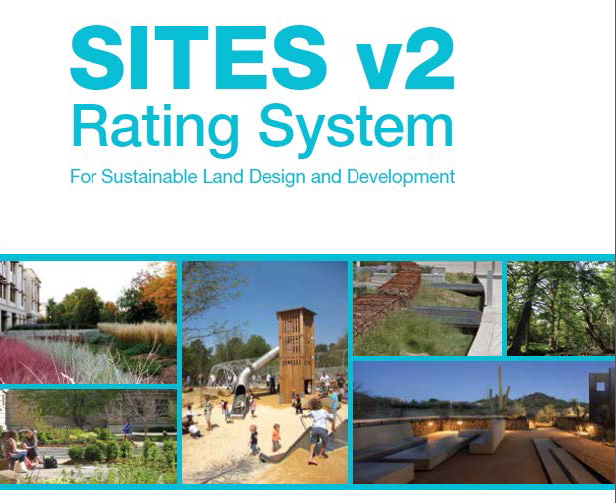 Teaching a new land design and development rating system (SITESv2 or “LEED for Land ) to fourteen diverse, motivated, yet possibly sleepy urban design students in 45 minutes might be a challenge. But as an evening guest lecturer at NYU’s Urban Design and Architecture Studies (NYU UDAS), I followed the same strategies as when I speak with any audience: keep it simple, lively and short. Oh, and provide a serious hand-out, throw in a little life experience, and share some marketing stories.
Teaching a new land design and development rating system (SITESv2 or “LEED for Land ) to fourteen diverse, motivated, yet possibly sleepy urban design students in 45 minutes might be a challenge. But as an evening guest lecturer at NYU’s Urban Design and Architecture Studies (NYU UDAS), I followed the same strategies as when I speak with any audience: keep it simple, lively and short. Oh, and provide a serious hand-out, throw in a little life experience, and share some marketing stories.
Five PM is a tough time of day for everyone. So I grabbed a cup of coffee on a beautiful April day and headed into NYU’s handsome Silver Center building, located right next to Washington Square. My host – and class professor — is a long-time acquaintance, Jean Parker Phifer. Jean is a highly respected architect and associate in the firm Thomas Phifer Partners . Jean and I had previously discussed SITES and Studioverde’s stand-alone SITES services , and after she invited me to speak to her NYU Environmental Design class.
 Storytelling is my number-one goal when lecturing about anything. It’s easy to get bogged down in details when talking about SITES, a nationally recognized rating system for the design, construction and maintenance of developed landscapes, so I used many photos as examples and used specific projects to illustrate the five focus areas (water, soil, vegetation, materials, health and human well-being) and the 10 sections of the rating system.
Storytelling is my number-one goal when lecturing about anything. It’s easy to get bogged down in details when talking about SITES, a nationally recognized rating system for the design, construction and maintenance of developed landscapes, so I used many photos as examples and used specific projects to illustrate the five focus areas (water, soil, vegetation, materials, health and human well-being) and the 10 sections of the rating system.
We began with site selection and assessment, touching on the need for an integrated design team. I then explained design requirements and credits, illustrating how best practices for construction contributes to the total points. I concluded with the need for post-construction maintenance. Mid-way through the class, I distributed the all-important and information-packed “Scorecard” which enumerates the SITES prerequisites and credits, as well as possible credit point count. I shared stories of Studioverde’s marketing efforts and how hard we work to get the SITES word out.
The questions from this interested and interesting group of future architects and urban planners were spot-on. One student asked about the applicability of SITES in urban areas. (Answer: Yes, a big chunk of the 70 minimum required points for certification can be earned by restoring a brownfield site, and then there are the water and materials SITES credits.)
I’ve lectured on SITES for the past six years to Greenbuild, other landscape architects, colleges and universities, and ran workshops for many architects and engineers. Somehow teaching a class of eager, young bright students brought out the best of SITES me. Thanks to NYU, Jean Parker Phifer and her talented design class for the opportunity!
CeCe Haydock, PLA, ASLA, LEED AP is a Studioverde SITES Partner and pilot project manager for the Hempstead Plains Education and Research Center SITES 2-Star Project. Read CeCe’s bio here.
